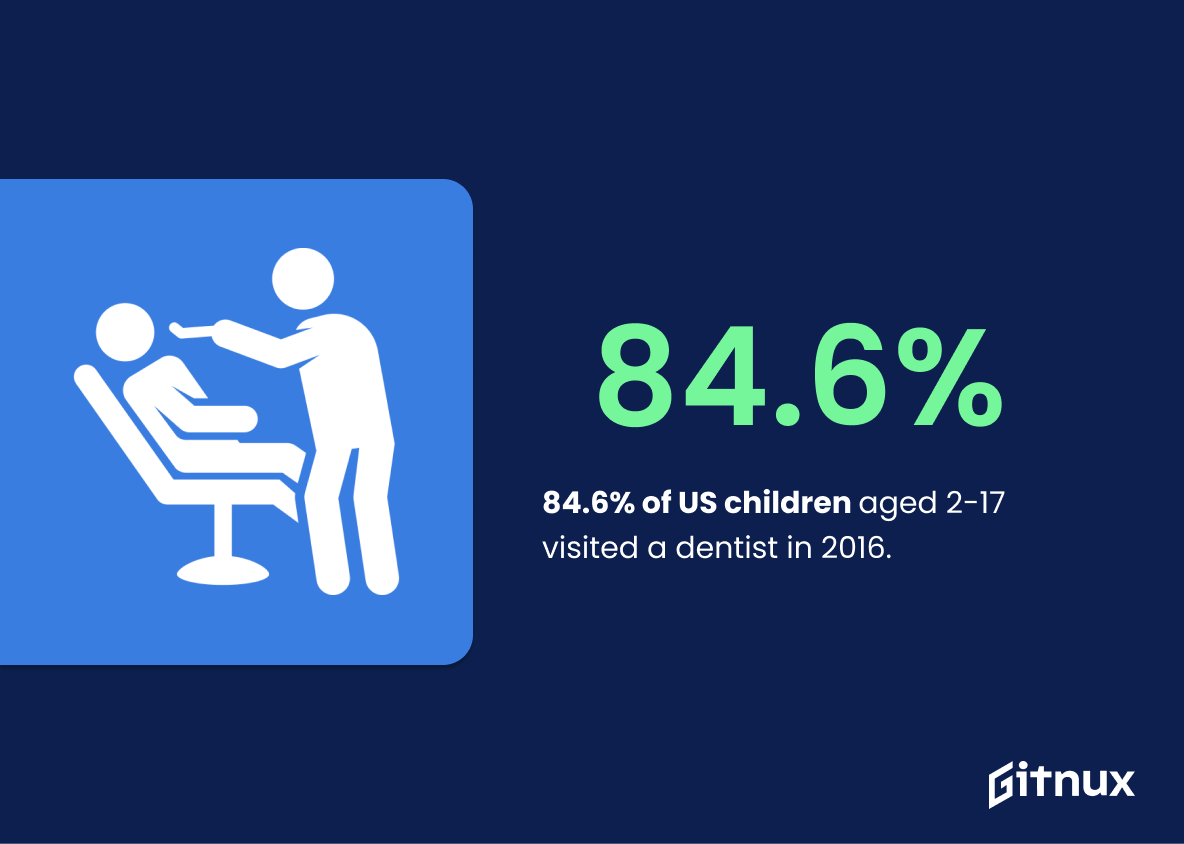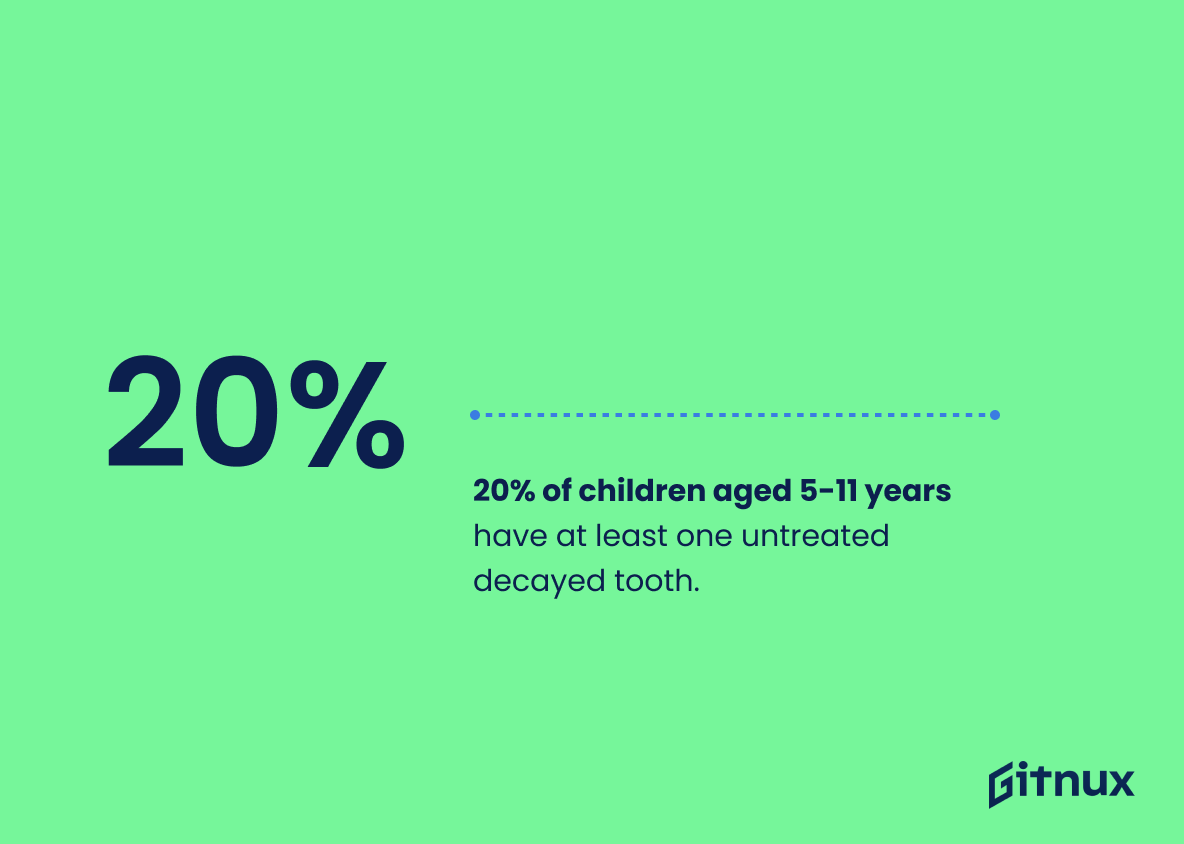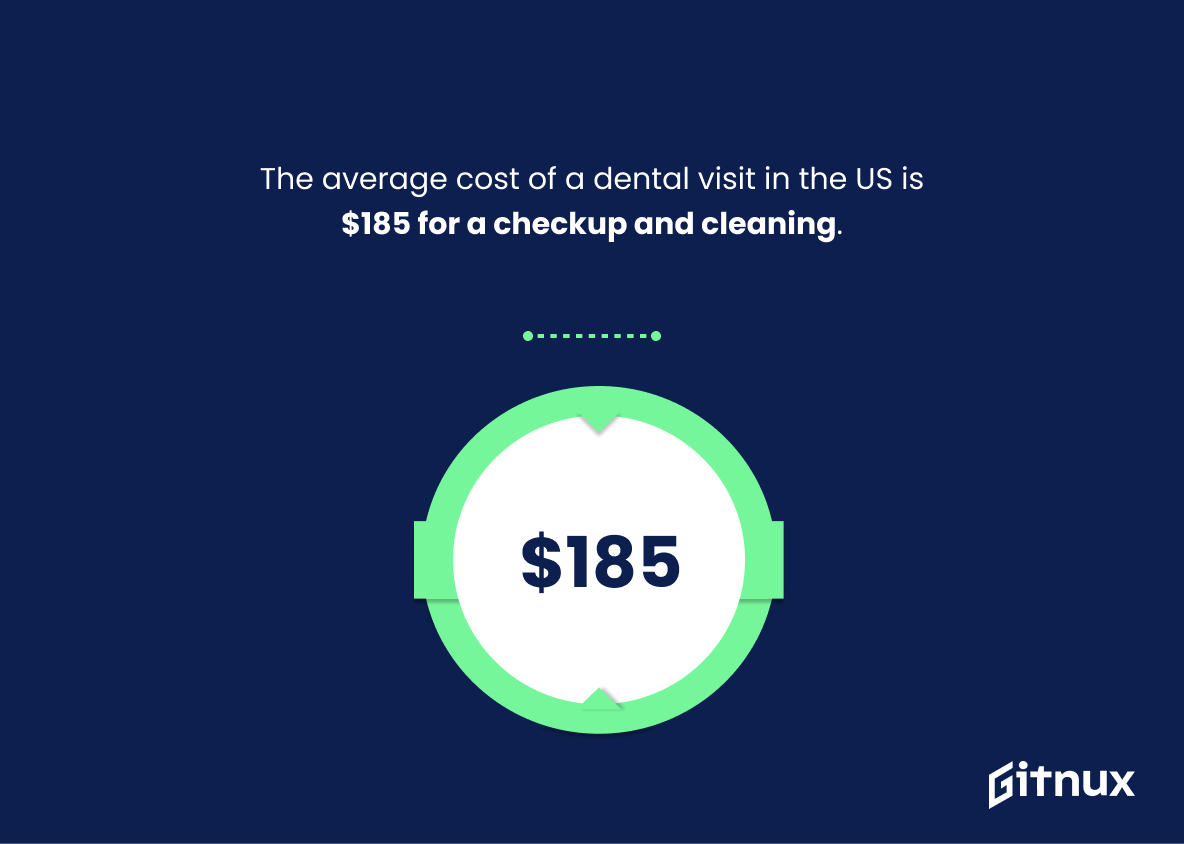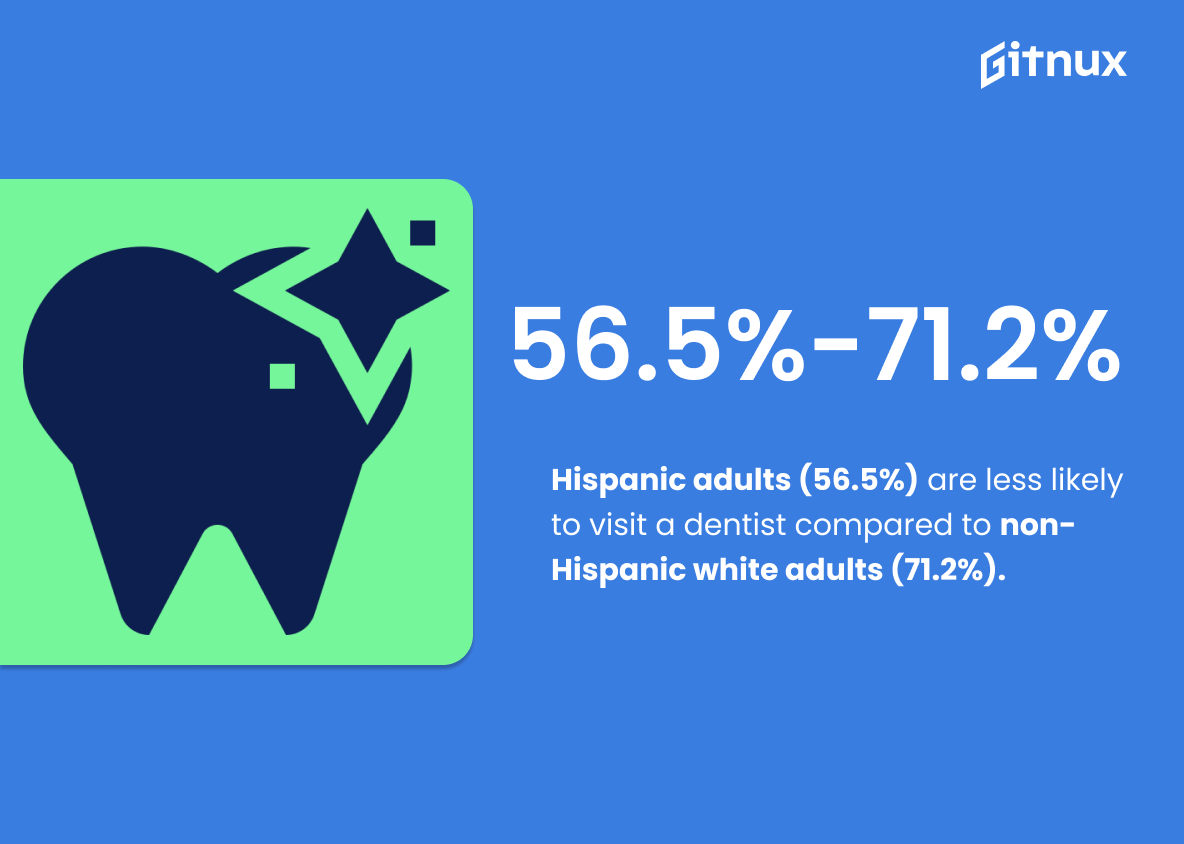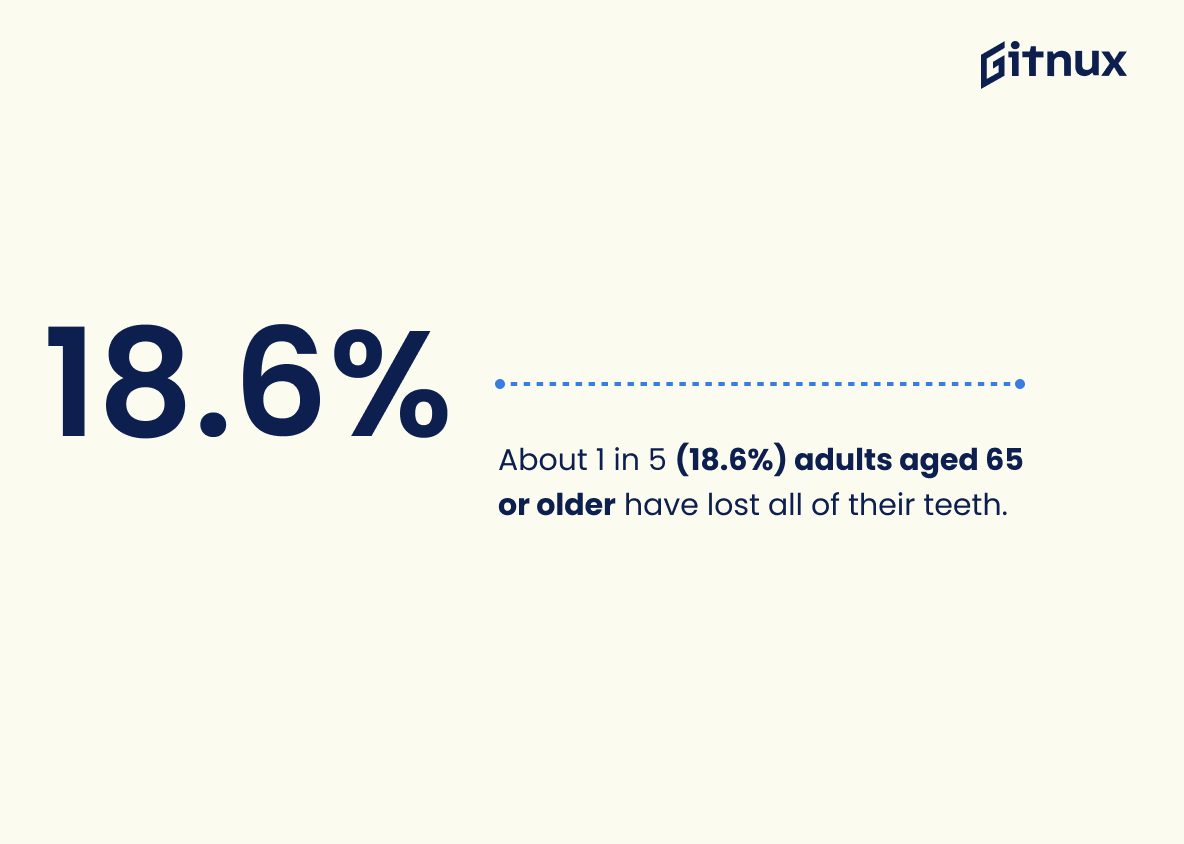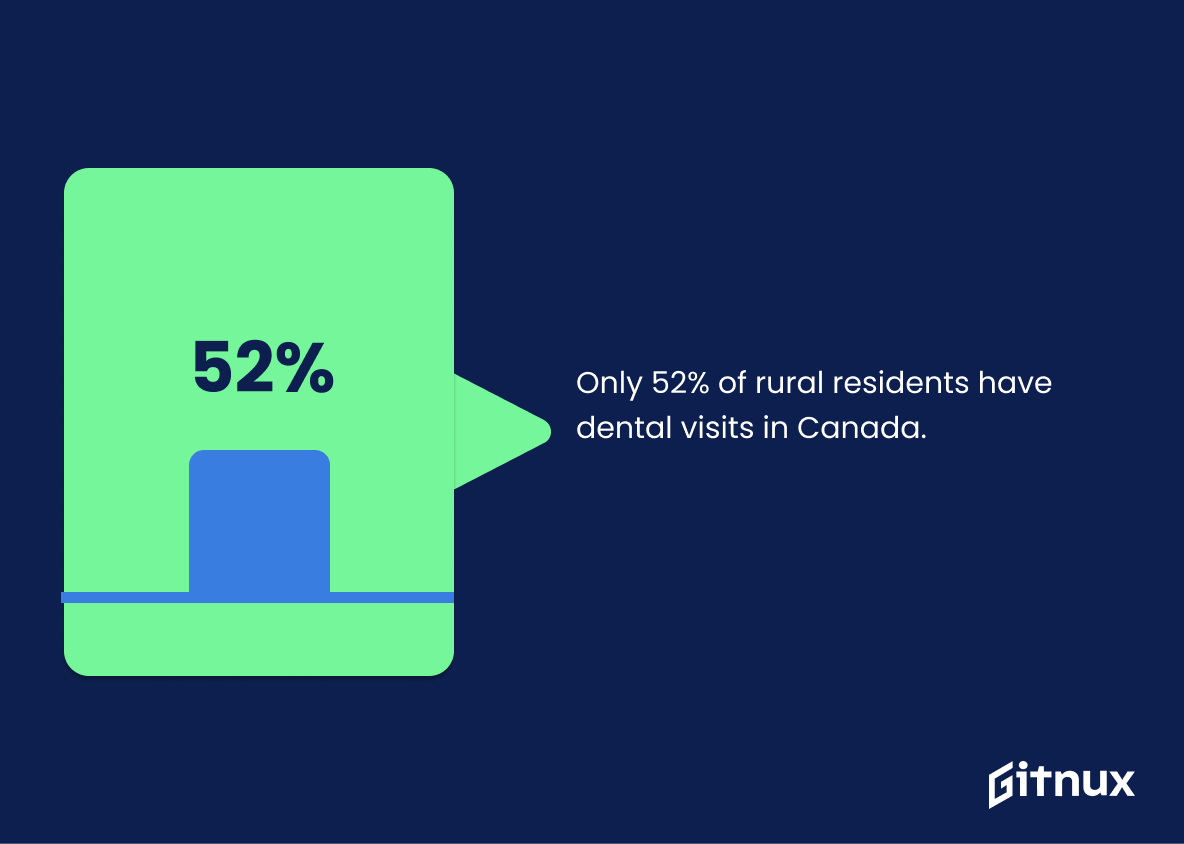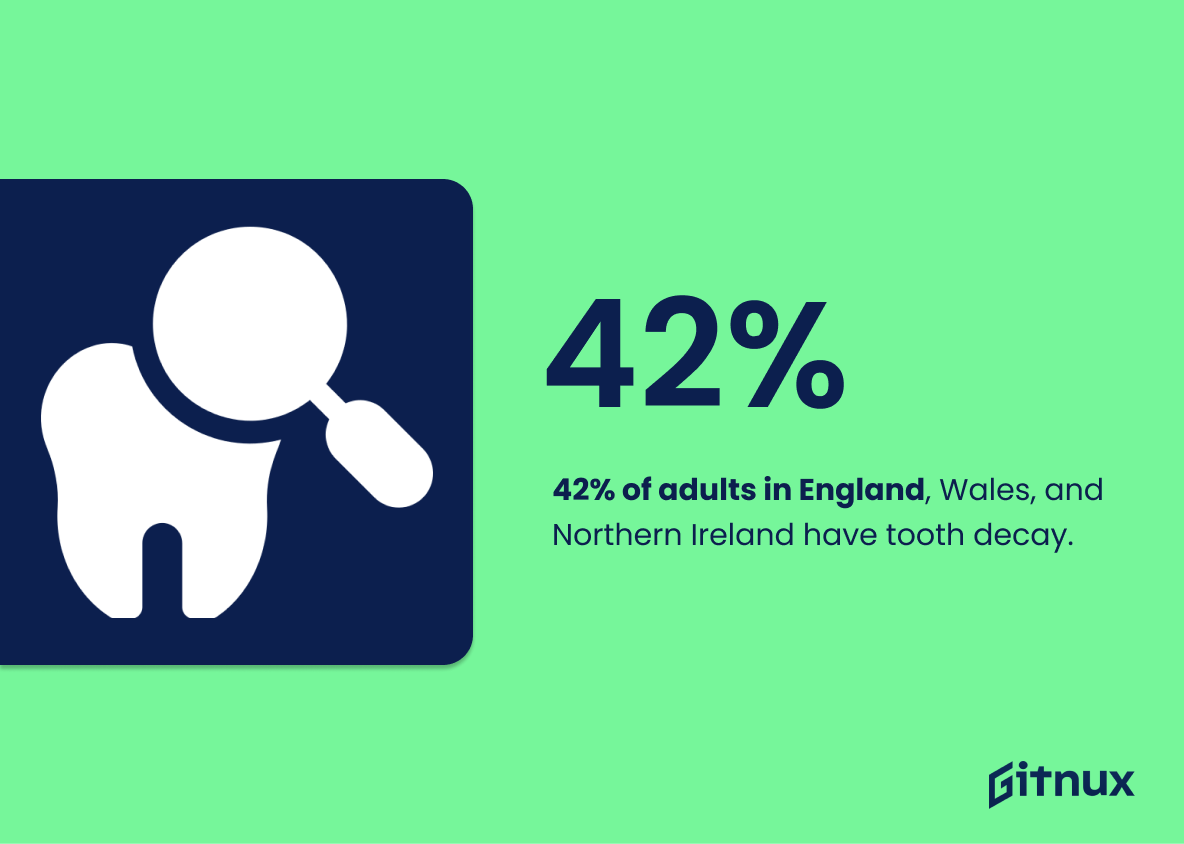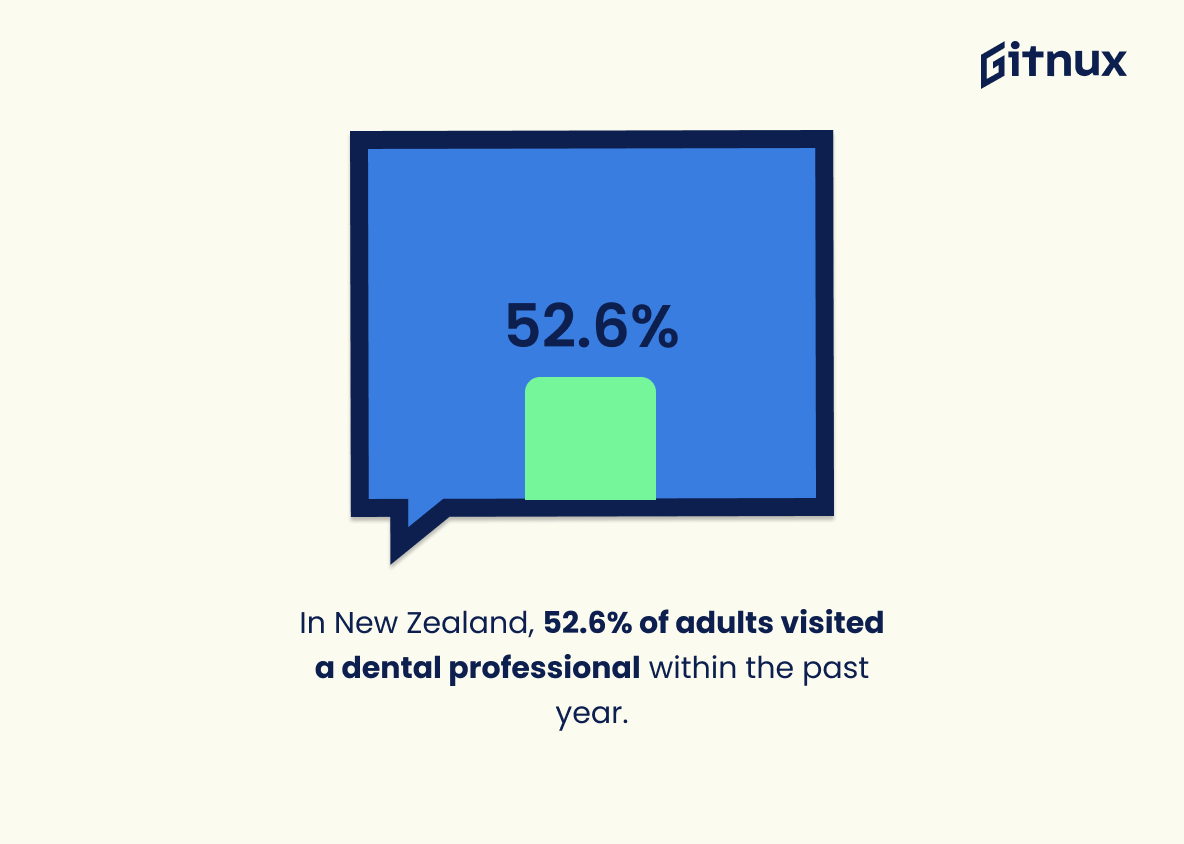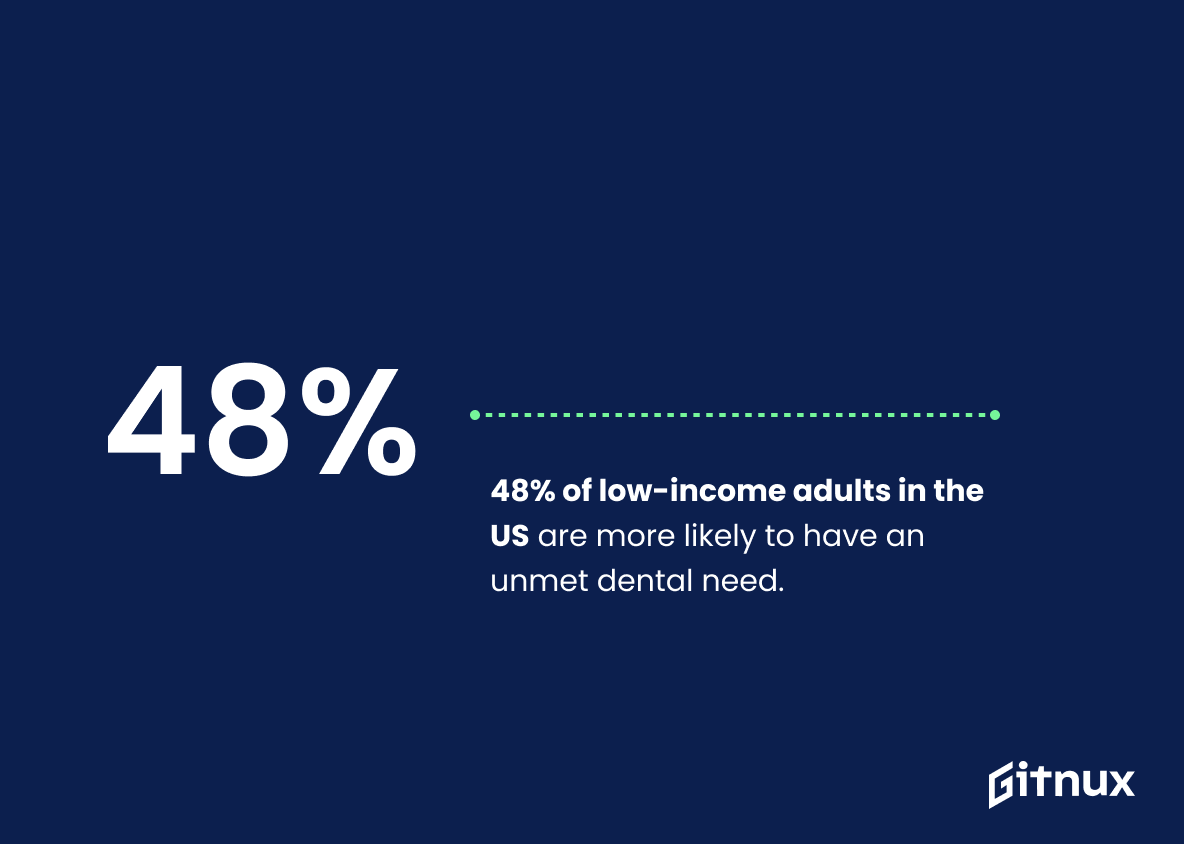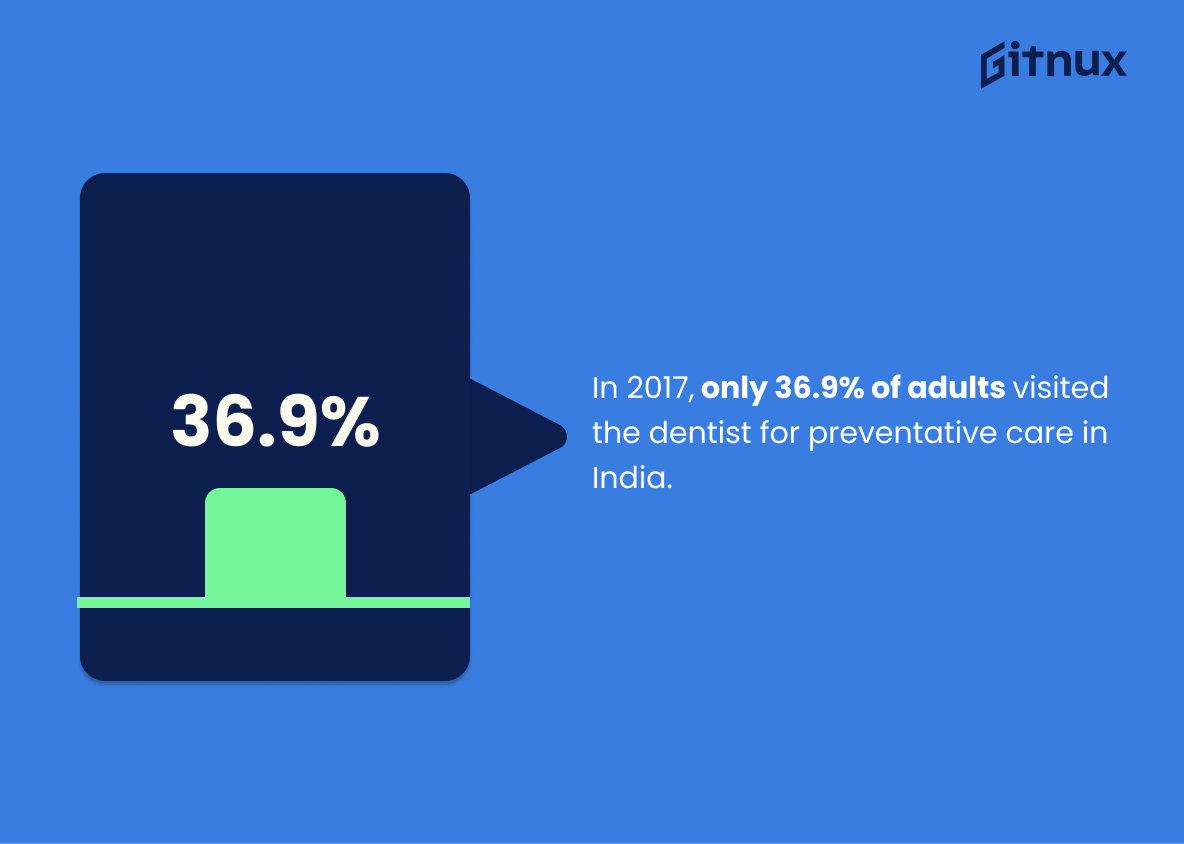According to the CDC, 64.9% of adults (18-64) and 84.6% of children (2-17) in the U.S. visited a dentist in 2019 and 2016 respectively. However, the NIDCR reveals that 20% of adults aged 65-74 suffered severe tooth loss. As per the NCBI PMC Journal, adults typically visit a dentist every three years, yet 20% of children (5-11) have an untreated decayed tooth.
Further, 59% of UK adults saw an NHS dentist within two years, whereas 38% of Australian adults didn’t visit a dentist for over a year due to cost barriers and fear, according to a 2017/18 ADA Australia survey. The average checkup cost is $185 (Health Markets study), with 56.5% of Hispanic adults less likely to visit dentists than non-Hispanic whites (71%).
Meanwhile, only 52% of rural Canadians accessed dental care versus 67% of U.S. citizens earning over $100K annually. A 2018 BMC Oral Health journal revealed that 45% of the global population has some degree of odontophobia, leading to 18.6% of seniors with no natural teeth. Lastly, 32.6% of older disabled individuals didn’t receive treatment due to financial or physical constraints.
Dental Visit Statistics Overview
84.6% of US children aged 2-17 visited a dentist in 2016.
This statistic is a testament to the importance of dental visits for children in the US. It shows that the majority of parents are taking the necessary steps to ensure their children’s oral health is taken care of. This statistic is a great starting point for a blog post about Dental Visit Statistics, as it provides a baseline for further discussion about the importance of dental visits for children.
On average, adults visit a dentist every 3 years.
This statistic is a telling indication of the importance of dental visits. It shows that, on average, adults recognize the need to visit the dentist every three years in order to maintain good oral health. This statistic is a reminder that regular dental visits are essential for keeping teeth and gums healthy.
20% of children aged 5-11 years have at least one untreated decayed tooth.
This statistic is a stark reminder of the importance of dental visits for children aged 5-11 years. It highlights the fact that a significant portion of this age group have at least one untreated decayed tooth, which can lead to a range of dental health issues if left untreated. It is essential that parents and guardians ensure their children are receiving regular dental check-ups and treatments to prevent any further damage to their teeth.
59% of adults in the UK visited an NHS dentist within the last two years.
This statistic is a telling indication of the importance of dental health in the UK. It shows that the majority of adults are taking the necessary steps to ensure their dental health is in check, which is a positive sign. This statistic is also important in understanding the overall health of the population, as dental health is often linked to overall health. Furthermore, this statistic can be used to inform policy decisions and help allocate resources to ensure that everyone has access to quality dental care.
The average cost of a dental visit in the US is $185 for a checkup and cleaning.
This statistic is an important indicator of the cost of dental care in the US, providing readers with a valuable insight into the financial implications of visiting the dentist. It is a useful reference point for those considering a dental visit, allowing them to plan their budget accordingly. Furthermore, it can be used to compare the cost of dental care in the US to other countries, providing a valuable comparison.
Hispanic adults (56.5%) are less likely to visit a dentist compared to non-Hispanic white adults (71.2%).
This statistic is a stark reminder of the disparities in dental care access between Hispanic adults and non-Hispanic white adults. It highlights the need for greater efforts to ensure that all individuals, regardless of their ethnicity, have access to quality dental care.
38% of Australian adults haven’t visited a dentist in 12 months.
This statistic is a stark reminder of the importance of regular dental visits. It highlights the fact that a significant portion of the Australian adult population is not taking the necessary steps to ensure their oral health is in good condition. This statistic is a call to action for individuals to prioritize their dental health and make sure they are visiting the dentist regularly.
About 1 in 5 (18.6%) adults aged 65 or older have lost all of their teeth.
This statistic is a stark reminder of the importance of regular dental visits. With nearly one-fifth of adults aged 65 or older having lost all of their teeth, it is clear that proper dental care is essential for maintaining oral health. Regular dental visits can help prevent tooth loss and other dental issues, ensuring that seniors can enjoy a healthy smile for years to come.
Only 52% of rural residents have dental visits in Canada.
This statistic is a stark reminder of the disparities in dental care between rural and urban areas in Canada. It highlights the need for increased access to dental care in rural areas, as well as the need for more education and awareness about the importance of regular dental visits.
Approximately 45% of adults in the world have dental anxiety, and 4% have dental phobia.
This statistic is a stark reminder of the prevalence of dental anxiety and phobia among adults worldwide. It highlights the importance of understanding the causes of dental anxiety and phobia, and of providing resources to help those affected. It also serves as a reminder of the need for dental professionals to be aware of the prevalence of dental anxiety and phobia, and to be prepared to provide appropriate support and care to those affected.
42% of adults in England, Wales, and Northern Ireland have tooth decay.
This statistic is a stark reminder of the importance of regular dental visits. Tooth decay is a preventable condition, yet it is still prevalent in a large portion of the population. This statistic highlights the need for more education and awareness about the importance of dental hygiene and regular dental visits. It also serves as a reminder that dental health should not be taken for granted, and that regular check-ups are essential for maintaining good oral health.
In New Zealand, 52.6% of adults visited a dental professional within the past year.
This statistic is a powerful indicator of the importance New Zealanders place on dental health. It shows that the majority of adults are taking the necessary steps to ensure their teeth and gums remain healthy. This statistic is also important in understanding the overall health of the population, as poor dental health can lead to a variety of other health issues. The statistic is a valuable piece of information for anyone looking to understand the importance of dental visits in New Zealand.
48% of low-income adults in the US are more likely to have an unmet dental need.
This statistic is a stark reminder of the disparities in access to dental care between low-income adults and their more affluent counterparts. It highlights the need for greater investment in dental care for those who are unable to afford it, as well as the need for more comprehensive dental coverage in health insurance plans.
In 2017, only 36.9% of adults visited the dentist for preventative care in India.
This statistic is a stark reminder of the importance of preventative dental care in India. It highlights the need for greater awareness and education about the importance of regular dental visits, as well as the need for improved access to dental care in the country. It also serves as a call to action for individuals, families, and communities to prioritize dental health and make sure they are taking the necessary steps to maintain good oral health.
Conclusion
From these statistics, it is clear that dental visits vary greatly across different countries and populations. In the US, adults with higher incomes are more likely to visit a dentist than those with lower incomes. Similarly, in India preventative care visits were much less common than other types of dental visits. Additionally, seniors and people living in rural areas tend to have fewer opportunities for regular checkups or treatments compared to younger generations or urban dwellers respectively. Overall, there is still room for improvement when it comes to increasing access to quality oral health care around the world.
References
0. – https://www.nhs.uk
1. – https://www.health.govt.nz
2. – https://www.digital.nhs.uk
3. – https://www.50.statcan.gc.ca
4. – https://www.cdc.gov
5. – https://www.bmcoralhealth.biomedcentral.com
6. – https://www.americashealthrankings.org
7. – https://www.healthmarkets.com
8. – https://www.nidcr.nih.gov
9. – https://www.nature.com
10. – https://www.ada.org.au
11. – https://www.ncbi.nlm.nih.gov
12. – https://www.kff.org
